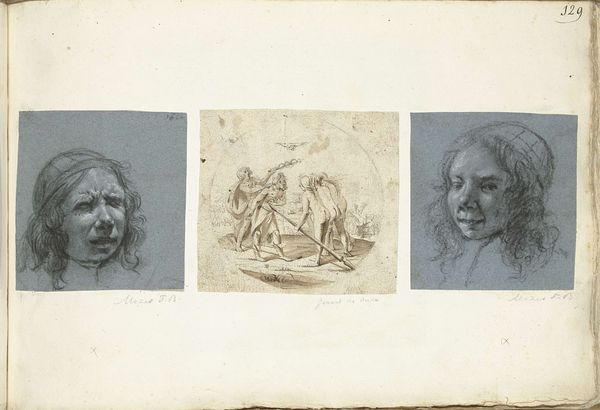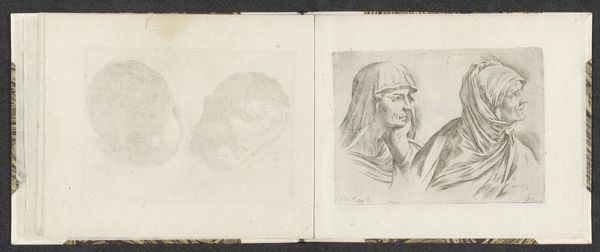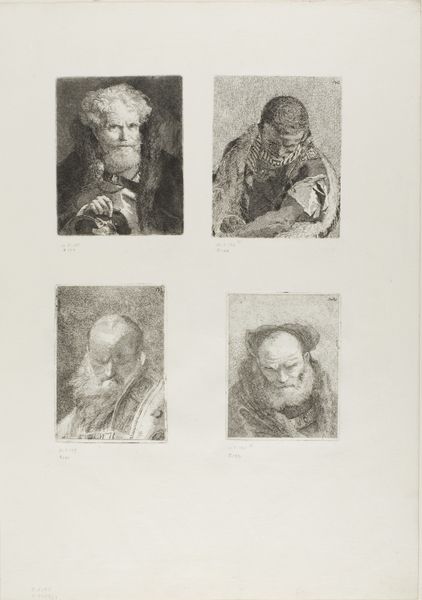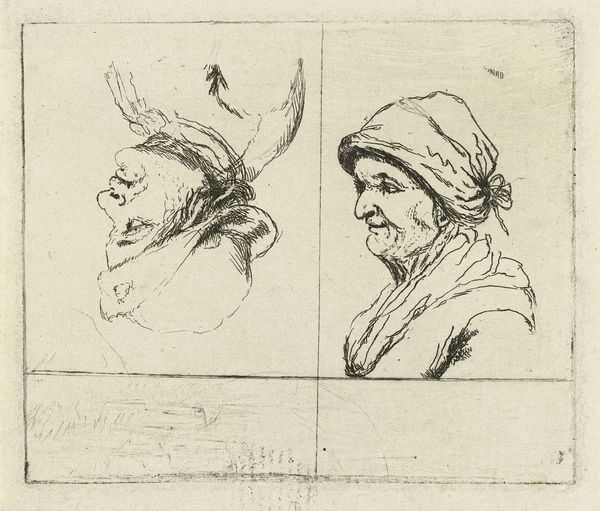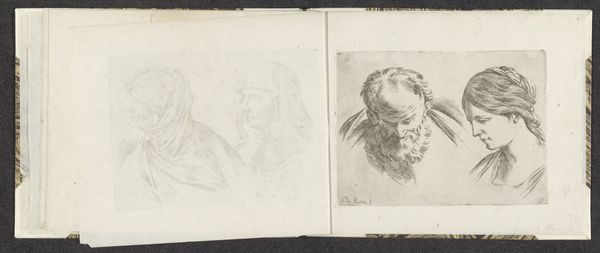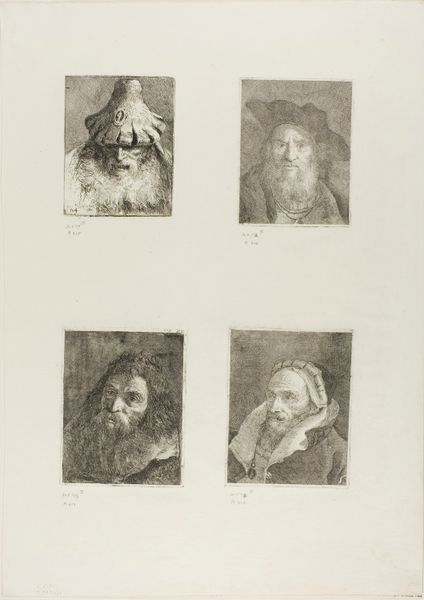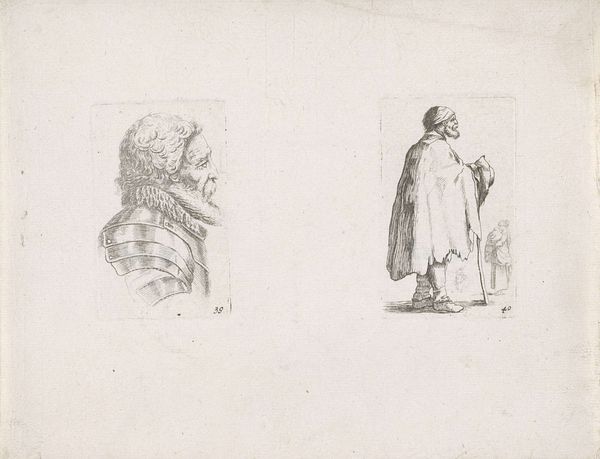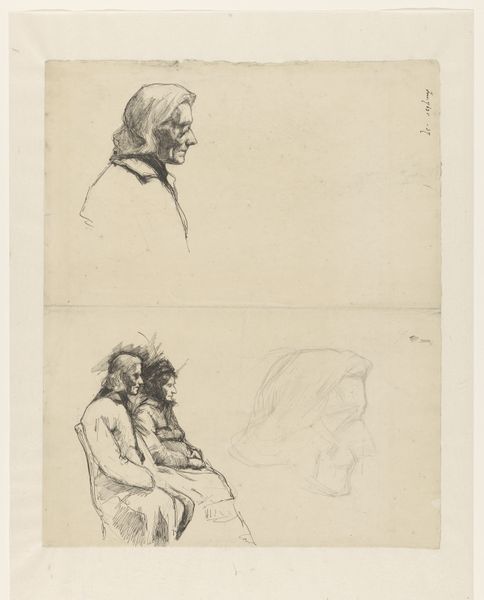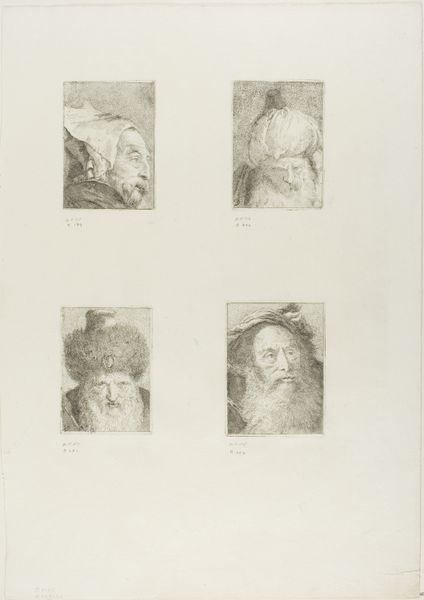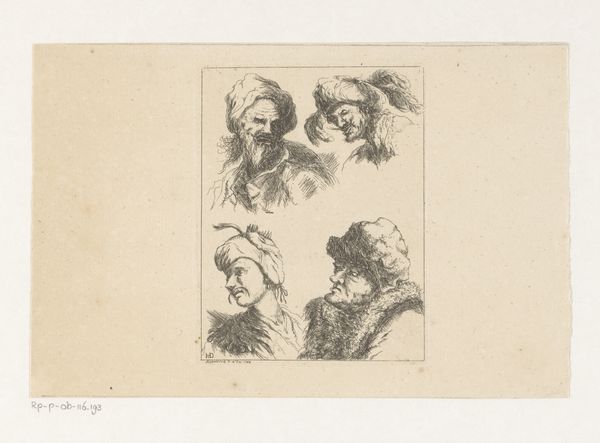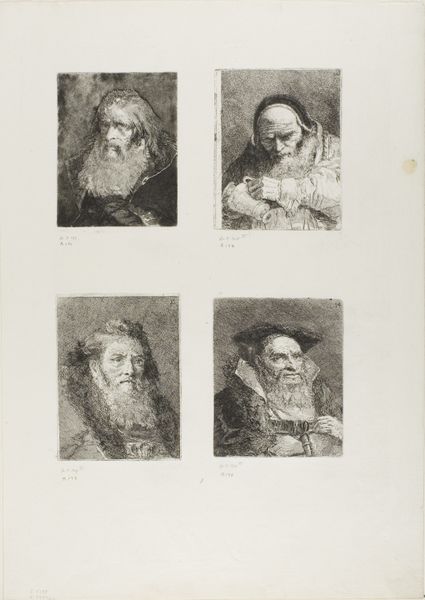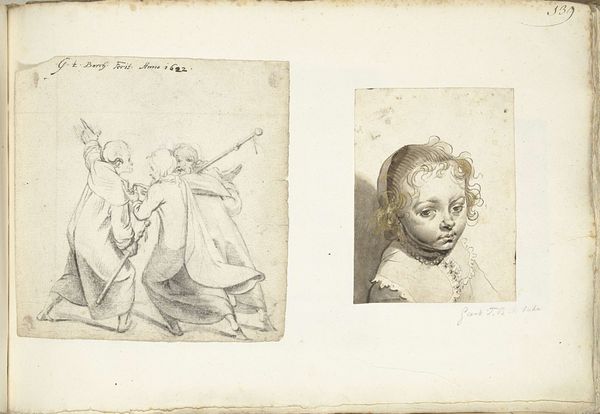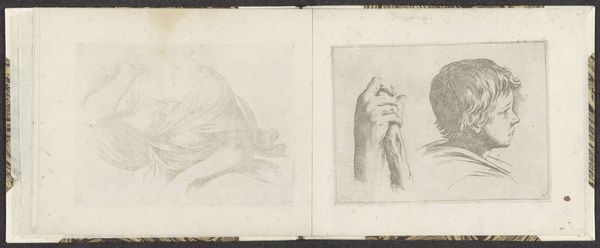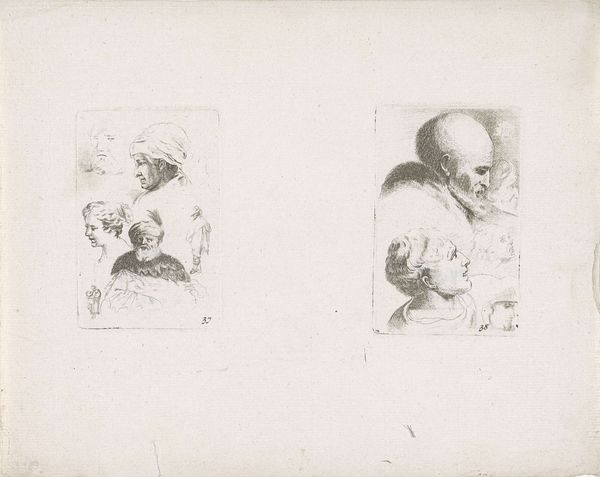
Dimensions: height 243 mm, width 360 mm
Copyright: Rijks Museum: Open Domain
Curator: Here we have "Oude man, een meisje en een vrouw met een puthaak", or "Old man, a girl, and a woman with a fireplace poker," a drawing by Moses ter Borch from circa 1651 to 1687. It’s currently housed here at the Rijksmuseum. Editor: Immediately, I’m drawn to the stark realism—particularly the old man. His etched, downward gaze just oozes resignation and perhaps even a touch of quiet defiance. It’s incredibly affecting. Curator: Indeed. Ter Borch often captured the human condition with raw vulnerability. Consider how this image resonates with the social realities of 17th-century Dutch society. The drawings evoke questions around age, gender roles, and domestic labor, perhaps subtly challenging societal norms. The image of the woman with the poker is so evocative, what narrative do you find there? Editor: To me, the poker itself becomes almost a symbolic object, reflecting a kind of laborious servitude and a life lived tending a domestic space. Even more intriguing, though, are the connections, perhaps unintended, to the cultural archetypes of the old man figure or depictions of female adolescence. How does that symbolic contrast operate across class? Curator: Well, Ter Borch himself was born into the middle class, allowing us a peak at this world with access but removed enough for observation and even commentary. Are these symbols of domestic life? Oppression? Or simply images taken from everyday life that hold weight over time and circumstance? Editor: Yes, and isn't that constant evolution of meaning the beautiful paradox of symbolism? Ter Borch presents images that both reveal and conceal layers of meaning, resonating with us centuries later. I suppose my instinct is to understand what continuities of lived experiences might echo from the Dutch Golden age to now. Curator: I agree that it's about finding those through lines between now and then and understanding the power of image to not only replicate social ideas, but reimagine them. What are other images this calls to mind? Where is the tension that demands some resolution? Editor: Looking at the collection as a whole helps me see more clearly the emotional narratives present, the lives, loves, and longings of those who came before us. Curator: Agreed, and in so doing, we ourselves become a link in a long human chain. We may reflect and reinterpret the same themes over time, offering new ways of understanding our world.
Comments
No comments
Be the first to comment and join the conversation on the ultimate creative platform.
